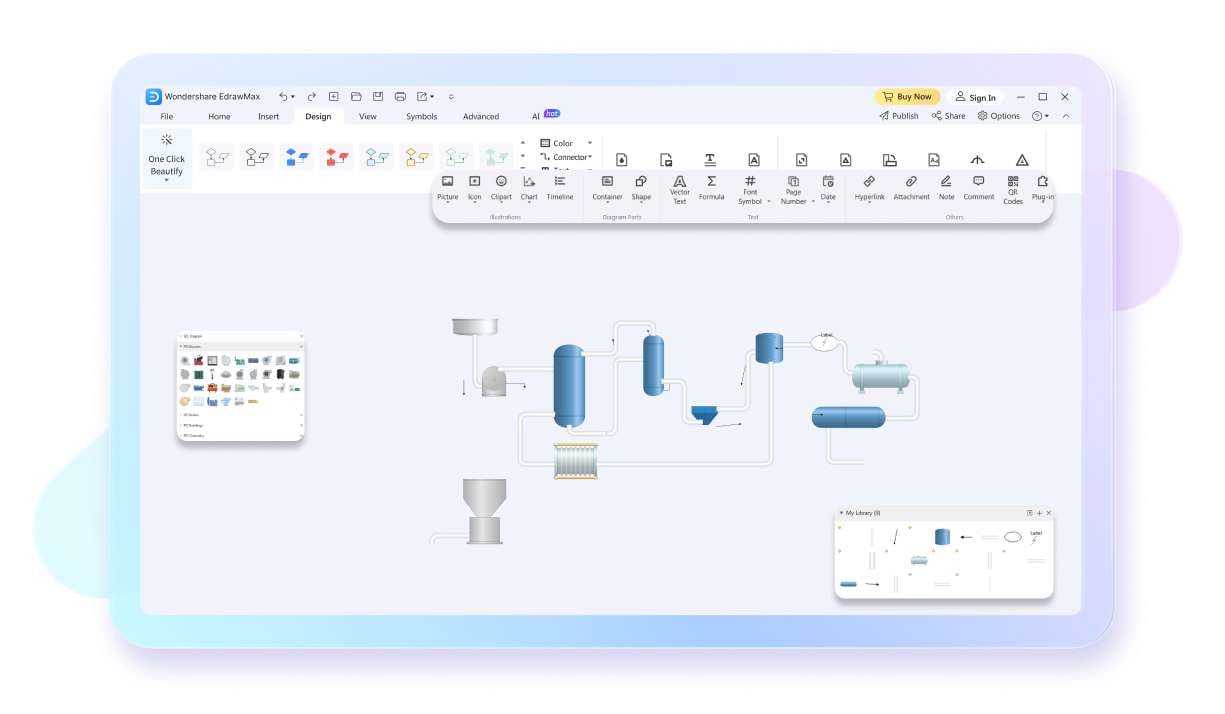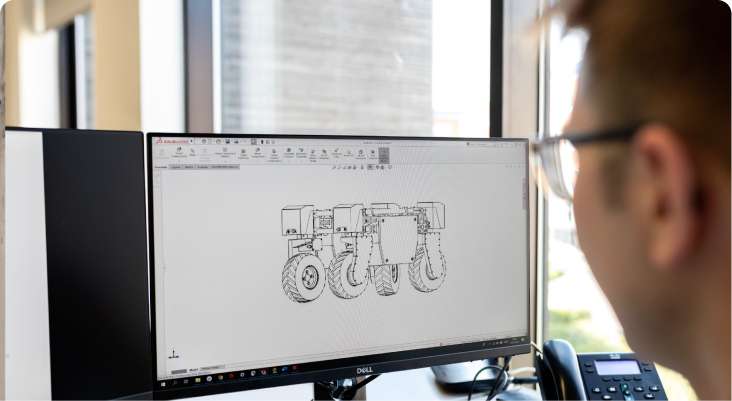Simple Schematic Diagram Software
Make professional schematic diagrams online with free ready-made templates and numerous vector symbols.
Your easy-to-use schematic diagram maker
Explore vast free templates and symbols
EdrawMax offers an extensive library of free templates and symbols, covering various fields of engineering. These templates provide a quick starting point, saving time and inspiring creativity for a wide range of projects.

Customize easily with drag-and-drop ease
EdrawMax features a user-friendly interface with powerful customization options. Users can access a personal library for tailored assets and employ drag-and-drop functionality for easy manipulation, making complex designs straightforward and accessible.

Enjoy affordable diagramming solutions
EdrawMax stands out with its competitive pricing, offering a range of affordable plans. This pricing structure makes professional diagramming tools accessible to individuals and businesses of all sizes without compromising on features or quality.

Seamlessly integrate with leading apps
The software seamlessly integrates with popular applications such as CAD, Visio, and Microsoft Office. This compatibility enhances workflow efficiency by allowing users to import, edit, and export diagrams across different platforms effortlessly.

Utilize across multiple platforms effortlessly
EdrawMax is designed for versatility, supporting various operating systems, including Windows, macOS, and Linux. This cross-platform support ensures a consistent experience for users, whether they are working on a PC, Mac, or a Linux-based system.

Schematic diagram maker for everyone

Electrical Engineers
Create circuit diagrams, schematics, and wiring layouts for electrical systems and equipment installations.

Mechanical Engineers
Use for process block diagrams, mechanical system designs, and equipment schematics in manufacturing and engineering projects.

Civil Engineers
Design and communicate building layouts, ensuring efficient
use of space and accurate construction plans.
Why do users choose EdrawMax?

Precise in design
EdrawMax offers various high-precision features like
auto-aligning for accurate designs, ensuring both visual
appeal and functional efficiency in various spaces.

Intuitive and beginner-friendly
EdrawMax's user-friendly interface and intuitive design
tools make diagramming accessible to all, from
experienced architects to first-time users, fostering
creativity and effortlessly turning visions into reality.

Affordable and cost-effective
EdrawMax's free version and flexible paid plans make it a
cost-effective choice, allowing efficient resource
allocation and empowering users to create intricate schematic diagrams without high cost.

Efficient and time-saving
EdrawMax streamlines diagramming with robust features
and vast libraries of templates and symbols, saving time for
engineers to bring ideas to life promptly.
How to make a schematic diagram with EdrawMax?
-
1.
What is a schematic
diagram? -
2.
Why use a schematic
diagram? -
3.
Tips for using schematic diagrams -
4.
How to make a schematic diagram -
5.
How to read schematic diagrams
What our users say
FAQs about schematic diagram makers
-
In addition to the free plan, What paid plans does EdrawMax offer?EdrawMax offers both subscription-based and perpetual pricing plans. Customers also have the option to purchase EdrawMax bundled with other products for additional discounts. For more detailed information, it's recommended to visit the pricing page.
-
Are there special discounts for students?EdrawMax offers special discounts to students on subscription-based plans, available upon providing specific information to verify student status. For detailed information about eligibility and how to apply, please visit our pricing page for education.
-
Can I collaborate with others using EdrawMax?Yes, EdrawMax supports collaboration, allowing multiple users save diagrams on the cloud and work on the same diagrams, which is especially useful for team projects. You can share your diagrams through a link.
-
Is it hard to learn to use EdrawMax?EdrawMax is acclaimed for its beginner-friendly nature, featuring an MS Office-like intuitive interface that eases the learning process. Its simplicity is a key factor in user preference, as revealed by user surveys. For further assistance and resources, please read our user guides to learn how to use the software.
-
What export formats does EdrawMax support?EdrawMax supports a wide range of export formats, allowing for versatile use of diagrams. Key formats include VSDX, PDF, Word, Excel, PowerPoint, and various image formats like JPG, PNG, SVG, and more, ensuring compatibility with different platforms and uses.
-
Can I create a schematic diagram online?Indeed, creating a schematic diagram online is feasible with tools like EdrawMax. As a renowned online diagramming software, EdrawMax provides an extensive collection of templates and specialized features for creation of schematic diagrams. It enables users to effortlessly drag and drop pre-made shapes, customize dimensions, and incorporate various elements such as furniture, making it simple to design detailed and professional schematic diagrams.







Schematic diagram templates from EdrawMax